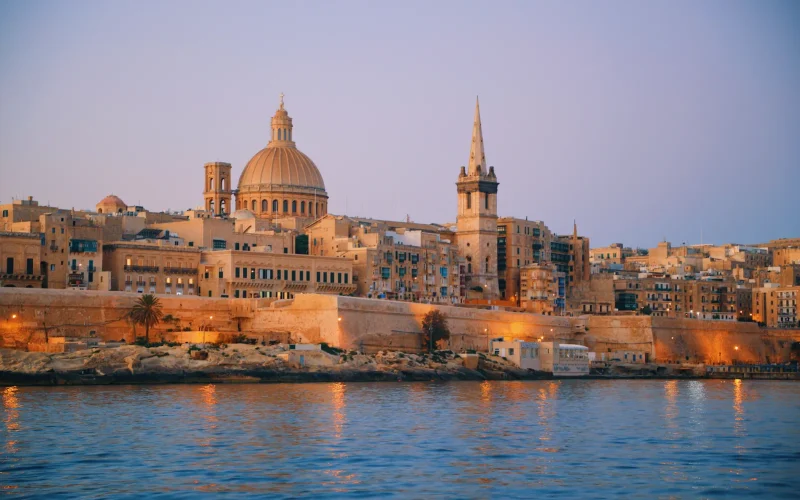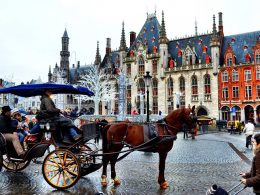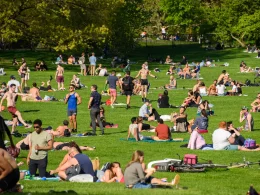Introduction
Valletta, Malta’s capital city, is a living museum of grand palaces, sturdy forts, and ornate churches. Built after the Great Siege of 1565, it stands as a testament to the resilience and vision of the Knights of St. John. Walking its narrow streets, you encounter sites that shaped Mediterranean history. Each hotspot carries a story of art, war, faith, or governance. In this article, we explore Valletta’s top historical attractions—their origins, roles, and lasting impact. If you love history or simply wish to see beautiful architecture, Valletta’s hotspots offer a journey through centuries of triumph and transformation.
A Brief History of Valletta
After the Ottoman siege of 1565, Grand Master Jean Parisot de Valette commissioned a fortified city on the Sciberras Peninsula. Architects laid out wide main streets in a grid, a novel design for its time. Walls, bastions, and a deep ditch protected the site. Wealth from trade poured in, allowing the Knights to build lavish churches and auberges (inns). By 1571, Valletta was a beacon of defense and culture. Over time, it saw rule by the Knights, the French under Napoleon, and the British. Each left architectural and cultural marks, making Valletta a unique blend of styles and stories.
St. John’s Co-Cathedral
St. John’s Co-Cathedral began as a humble chapel in 1572 but grew into one of Europe’s richest Baroque churches. Inside, walls and ceilings are covered in gold leaf and intricate carvings. The marble floor houses tombstones of knights, each with detailed coats of arms. The highlight is Caravaggio’s masterpiece, The Beheading of Saint John the Baptist. Beyond its beauty, the cathedral symbolized the Knights’ power and faith. It served as a venue for major ceremonies and gatherings. Today, visitors marvel at its art and learn how faith and artistry merged in Valletta’s early years.
Fort St. Elmo and the Siege of 1565
Guarding Valletta’s harbor entrance, Fort St. Elmo played a critical role in the Great Siege. Ottoman forces bombarded it for over a month before it fell, sacrificing its garrison but delaying the attackers long enough for relief forces to arrive. The brave defense earned the Knights time to build Valletta’s walls. The current star-shaped fort, rebuilt in the 17th century, houses the National War Museum. Exhibits display weapons, armor, and siege maps. Walking its ramparts, you gain a clear view of Marsamxett and the Grand Harbour, appreciating the strategic genius behind its design.
Upper Barrakka Gardens
Perched atop the city walls, the Upper Barrakka Gardens offer sweeping views of the Grand Harbour and Three Cities. Built in 1661 for Italian knights, the terraced gardens became a spot for relaxation and socializing. At noon, a cannon fires from the Saluting Battery below, a tradition that once greeted visiting dignitaries. Statues of past Grand Masters line the walkways, each celebrating contributions to the city’s defense or culture. For centuries, locals and visitors have gathered here—then for leisure, now for photo opportunities. The gardens blend natural beauty with historical tribute.
Grandmaster’s Palace
The Grandmaster’s Palace served as the residence of the Knights’ leader and housed the Order’s administrative offices. Construction began in 1574 and continued for decades, resulting in an elegant mix of military strength and refined decor. Inside, the State Rooms feature rich tapestries, painted ceilings, and antique furniture. The Armory displays hundreds of suits of armor and weapons used by the knights. Under British rule, part of the palace became the governor’s residence, and later it hosted Malta’s parliament. Today, it remains a symbol of governance and power, linking Valletta’s past rulers to its modern democracy.
Casa Rocca Piccola and the National Museum of Archaeology
Just off the main streets lies Casa Rocca Piccola, a 16th-century palace still inhabited by a noble Maltese family. The “Casa” offers guided tours through its decorated rooms, private chapel, and hidden war shelter used in World War II. Families share tales of daily life across centuries, giving personal insight into Valletta’s elite society.
A short walk away, the National Museum of Archaeology occupies Auberge de Provence. Its exhibits trace Malta’s history from prehistoric temples to Phoenician and Roman rule. Key displays include the Sleeping Lady and Venus of Malta statuettes, carved before 2000 BC. Together, these sites show Valletta not only as a fortress city but also as a keeper of Malta’s deep human story.
Historic Streets and Squares
Valletta’s grid layout makes exploration easy. Republic Street and Merchant Street brim with shops, cafes, and period façades. Along the way, you’ll pass St. Paul’s Pro-Cathedral, built by the British in the 19th century. St. George’s Square fronts the Grandmaster’s Palace, serving as a stage for public events since the Knights’ era. Manderaggio area retains its old fishermen’s houses, reflecting everyday life by the sea. Hidden courtyards and carved stone balconies reveal the blend of Arabic, Italian, and British influences that mark Valletta’s architectural tapestry.
Planning Your Visit
- Best Time to Go: Spring (April–June) and autumn (September–October) offer mild weather and fewer crowds.
- Guided Tours: Many hotspots provide expert tours—book in advance for popular sites like St. John’s Co-Cathedral.
- Combined Tickets: Save by purchasing a heritage pass covering multiple attractions, including the palace and fort.
- Walking Shoes: Valletta’s streets rise and fall; comfortable footwear is a must.
- Local Cuisine: Break for pastizzi (cheese-filled pastries) or ftira sandwiches at nearby cafés.
With thoughtful planning, you can cover major landmarks in two days or set a leisurely pace to savor every detail.
Conclusion
Valletta’s historic hotspots stand as living testaments to the city’s rich past, shaped by courage and vision. St. John’s Co-Cathedral reveals the artistic legacy of the Knights of St. John, while Fort St. Elmo recalls epic sieges and strategic defense. The Upper Barrakka Gardens and Grandmaster’s Palace reflect the city’s social and political heart. Together, these sites offer visitors a journey through architecture, art, and stories spanning centuries. By exploring Valletta’s landmarks, travelers connect with Malta’s unique history and gain a deeper appreciation for the resilience that built this capital.










